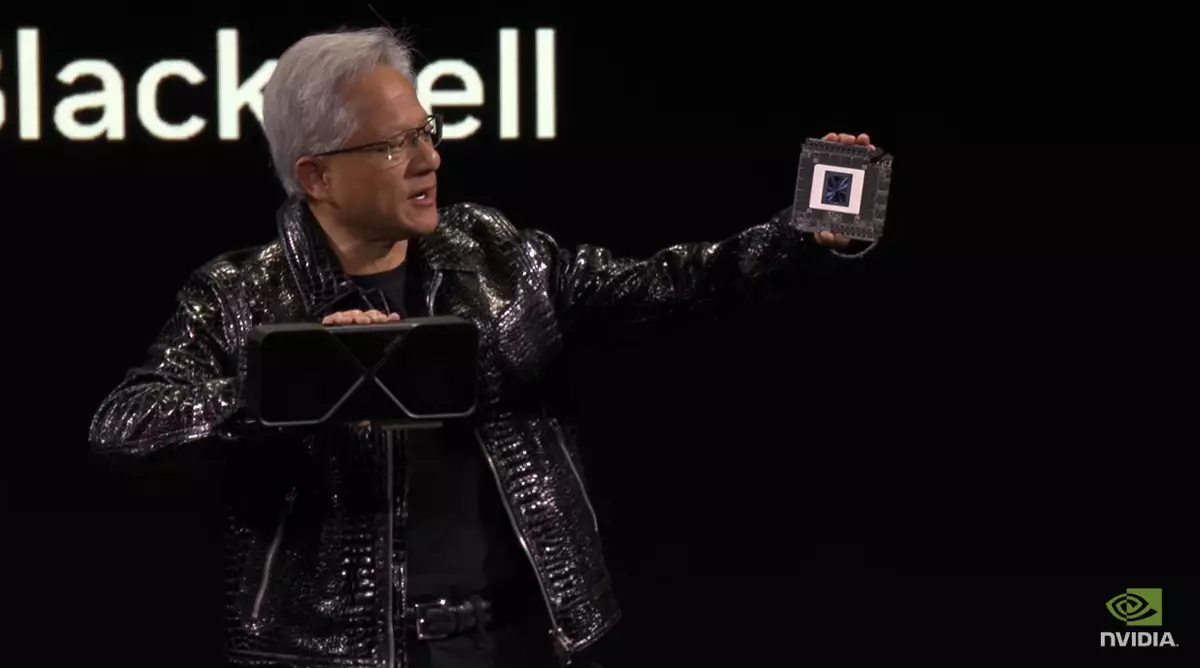As technology continues to advance at an astounding pace, Nvidia has once again positioned itself at the forefront of the gaming graphics hardware landscape with its latest release, the RTX Blackwell series. Introduced during the highly anticipated CES 2025 keynote by CEO Jen-Hsun Huang, this new line of GPUs offers gamers unprecedented performance at competitive pricing, raising the bar for consumer expectations in the world of graphics processing units.
One of the most remarkable announcements during the keynote was the unveiling of the RTX 5070, which boasts performance akin to the previous RTX 4090 – a card that originally commanded a staggering price tag of $1,599. Nvidia has strategically priced the RTX 5070 at just $549, illustrating a significant leap in value for consumers looking to get high-end performance without breaking the bank. This shift not only highlights Nvidia’s commitment to making powerful graphics accessible but also signals a potential shift in the competitive landscape of graphics cards, as rivals must reevaluate their offerings in response.
However, the impressive performance claims surrounding the RTX 5070 are primarily attributed to advancements in Nvidia’s DLSS (Deep Learning Super Sampling) technology. With the integration of DLSS 4 and the groundbreaking Multi Frame Generation feature, the RTX Blackwell family enables users to experience an enhanced graphical experience that can effectively generate up to three additional frames based on a single computation. This innovation is the key to understanding how a mid-tier GPU can achieve performance levels historically reserved for much more expensive models.
The introduction of AI has transformed various sectors, and gaming is no exception. Nvidia’s new transformer model is a significant step forward in the evolution of DLSS, leveraging AI to improve image quality and frame rates. With the promise of better graphical fidelity and a smoother gaming experience, the RTX Blackwell series appears positioned to support a growing range of applications that benefit from this innovative technology. Nvidia’s claim that 75 applications and games will support DLSS 4 at launch reiterates the company’s commitment to enhancing the gaming experience through expeditious leveraging of AI.
This focus on enhancing user experience rather than merely providing raw computational power represents a paradigm shift in how performance is perceived. The landscape of gaming is evolving, with the advent of technologies like Multi Frame Generation capable of shaping players’ experiences dramatically, blurring the lines between traditional hardware benchmarks and real-world gaming scenarios.
The RTX Blackwell series doesn’t just focus on a single product but rather presents a comprehensive lineup designed to cater to a broad spectrum of gamers. From the flagship RTX 5090, which boasts an eye-popping price of $1,999 and a promise of twice the performance of its predecessors, to the more budget-friendly RTX 5070 at $549, there is a GPU in the lineup for various preferences and budgets.
The RTX 5080 retains its pricing at $999, mirroring the previous generation’s RTX 4080 Super yet offers a performance enhancement that rivals the previous generation significantly. This approach to pricing, combined with powerful features, showcases Nvidia’s strategy of appealing to both high-end enthusiasts and casual gamers alike.
Furthermore, the launch timeline for the RTX Blackwell series, with the RTX 5090 and RTX 5080 slated for release on January 30, followed by the RTX 5070 Ti and RTX 5070 in February, positions Nvidia to capture the crucial early-year market, when many gamers are looking to upgrade their setups.
Nvidia’s RTX Blackwell series marks a transformative moment in the graphics card market, offering deep performance enhancements at prices that challenge previous generations of hardware. The integration of powerful AI-driven technologies emphasizes the importance of adaptability in the gaming landscape. As consumers eagerly await the release of these new cards, Nvidia’s innovations potentially redefine what can be expected from future graphics hardware. For gamers and tech enthusiasts alike, the future looks promising, with anticipation building for how Nvidia will continue to push the boundaries of technology in the years to come.


Leave a Reply